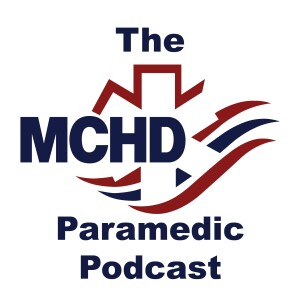
The medical directors revisit one of our old favorites "The Serial Killers Series" to discuss 5 trauma killers to keep in your front brain as you are preparing or caring for a sick trauma patient. If you've not considered your differential diagnosis until patient contact and initial evaluation then you're too late. Following this episode, you'll be ready to evaluate, act and prevent acute hemorrhage, obstructive shock, hypoxia, traumatic brain injury and DIC in your sickest trauma patients.
REFERENCES
1. Childress K, et al. Prehospital End-tidal Carbon Dioxide Predicts Mortality in Trauma Patients. Prehosp Emerg Care. 2018 Mar-Apr;22(2):170-174.
2. Androski CP Jr, et al. Case Series on 2g Tranexamic Acid Flush From the 75th Ranger Regiment Casualty Database. Journal of Special Operations Medicine : a Peer Reviewed Journal for SOF Medical Professionals. 2020 ;20(4):85-91.
3. Taghavi S, et al. An Eastern Association for the Surgery of Trauma multicenter trial examining prehospital procedures in penetrating trauma patients. J Trauma Acute Care Surg. 2021 Jul 1;91(1):130-140.
4. Sims CA, et al. Effect of Low-Dose Supplementation of Arginine Vasopressin on Need for Blood Product Transfusions in Patients With Trauma and Hemorrhagic Shock: A Randomized Clinical Trial. JAMA Surg. 2019 Nov 1;154(11):994-1003.
5. Kupas DF, et al. Glasgow Coma Scale Motor Component ("Patient Does Not Follow Commands") Performs Similarly to Total Glasgow Coma Scale in Predicting Severe Injury in Trauma Patients. Ann Emerg Med. 2016 Dec;68(6):744-750.
6. Rankin CJ, et al. A review of transfusion- and trauma-induced hypocalcemia: Is it time to change the lethal triad to the lethal diamond? J Trauma Acute Care Surg. 2020 Mar;88(3):434-439.
7. Laan DV, et al. Chest wall thickness and decompression failure: A systematic review and meta-analysis comparing anatomic locations in needle thoracostomy. Injury. 2016 Apr;47(4):797-804.
view more
More Episodes
Episode 168 - The VTach FACTs
 2024-05-20
2024-05-20
 2024-05-20
2024-05-20
Episode 165 - Intracerebral Hemorrhage
 2024-02-26
2024-02-26
 2024-02-26
2024-02-26
Episode 164 - EMS HOCUS POCUS
 2024-01-29
2024-01-29
 2024-01-29
2024-01-29
Episode 163 - Back Pain Beware
 2024-01-02
2024-01-02
 2024-01-02
2024-01-02
Episode 162 - Post-ROSC Pressor Choice
 2023-12-04
2023-12-04
 2023-12-04
2023-12-04
Episode 161 - MMQ#9 - The Angioedema Airway
 2023-11-06
2023-11-06
 2023-11-06
2023-11-06
Episode 159 - MMQ#8 - The Head and the Heart
 2023-09-11
2023-09-11
 2023-09-11
2023-09-11
Episode 158 - Terrible Tracheostomy 2023
 2023-08-14
2023-08-14
 2023-08-14
2023-08-14
Episode 155 - MMQ#6 - A Rapid AFib Riddle
 2023-05-22
2023-05-22
 2023-05-22
2023-05-22
012345678910111213141516171819
Create your
podcast in
minutes
- Full-featured podcast site
- Unlimited storage and bandwidth
- Comprehensive podcast stats
- Distribute to Apple Podcasts, Spotify, and more
- Make money with your podcast
It is Free
- Privacy Policy
- Cookie Policy
- Terms of Use
- Consent Preferences
- Copyright © 2015-2024 Podbean.com





